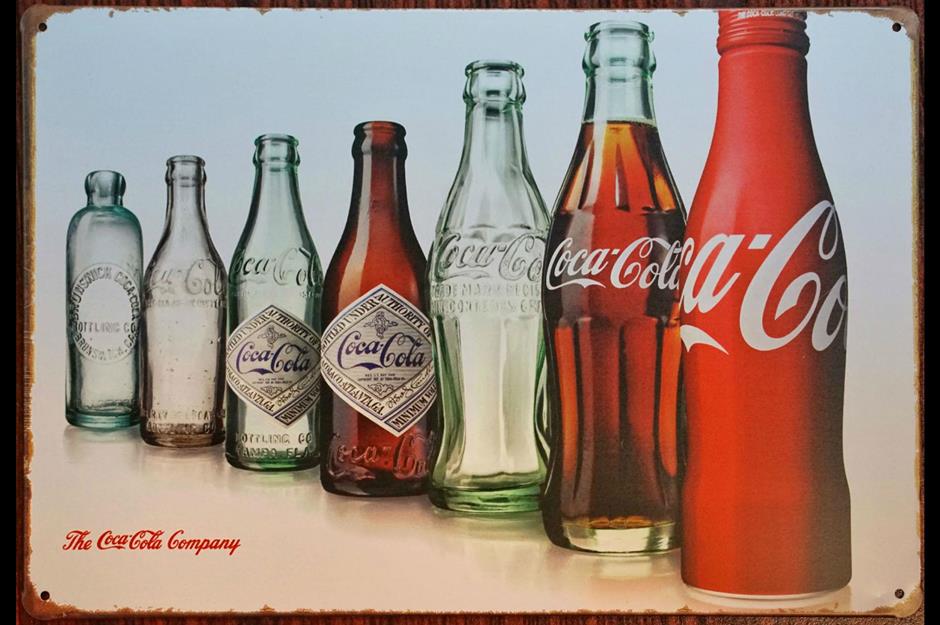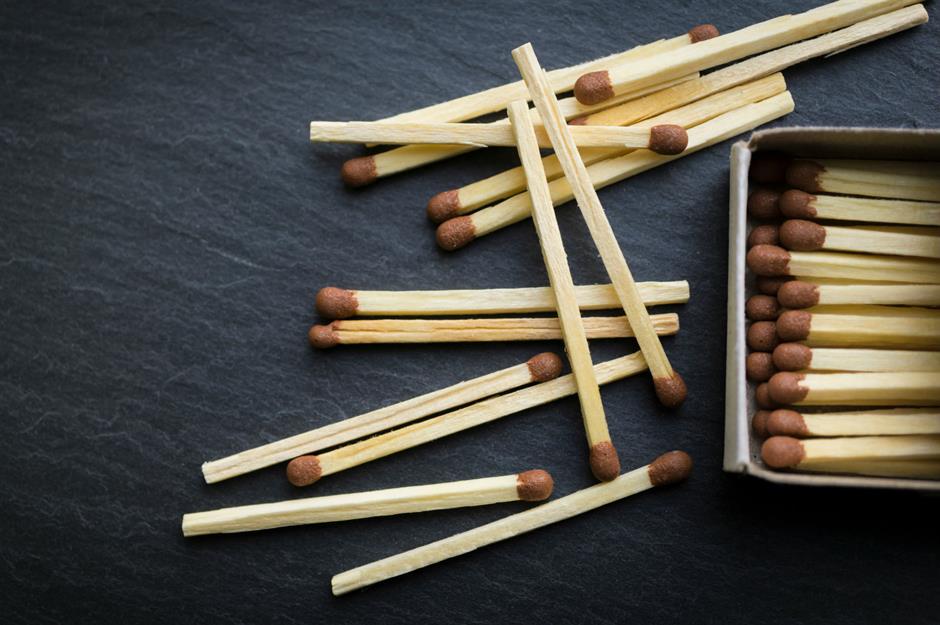World-changing products discovered by accident

ferdyboy / Shutterstock
The unlikely way huge discoveries were made
Many amazing inventions took decades of hard work, but a surprising number of major breakthroughs from X-rays to plastic were discovered completely by accident. Here is a run-down of some of the biggest discoveries by fluke, looking at how they happened and how they went on to shape the modern world.

Sergey D / Shutterstock
Matches – 1826
John Walker was a pharmacist by day at his shop in Stockton-on-Tees in the north of England, but in his spare time he often carried out experiments at home. He mixed chemicals in the hope of making a combustible paste for guns, however one day in 1826 he accidentally scraped his mixing stick on his hearth. According to the BBC, the stick suddenly erupted into a flame, becoming the world’s first match.
Matches – 1826
The moment revolutionised how fires could be started, as previously it had been much harder to set anything alight. Walker was selling his “Friction Light” matches within a year, packaging them in boxes with sandpaper strips. Sadly he failed to patent his invention – and within a few years, rival matchmakers had knocked his own firm out of business. The unfortunate inventor has a statue in his hometown, but the Northern Echo reported recently that it was based on the wrong man.
Natalya Ushkalova / Shutterstock
Synthetic rubber – 1839
Natural rubber proved popular when products first went on sale in the 1830s, but mania for the waterproof Brazilian gum rapidly evaporated. Consumers hated its fatal flaw – it turned rock-solid in the cold, and melted and stank in the heat. Yet continued experiments by one American, Charles Goodyear, and a stroke of luck would turn it into a staple of modern life, from tyres to shoes.
Synthetic rubber – 1839
The story goes that Goodyear, from Philadelphia, was in the middle of showing off the smoothness of his new rubber product when he made a much bigger breakthrough. He reportedly dropped the rubber by accident while waving it in the air, and it landed on a stove.
The resulting substance miraculously did not melt, and rubber as we know it was born. Goodyear’s limited business skills saw him die in huge debt, but his legacy was honoured in the US tyre firm which adopted his name.
neil langan / Shutterstock
Crisps – 1853
The inventor of crisps never wanted them to be a hit. American chef George Crum had prepared French fries for a customer at the New York restaurant in which he worked in the 1850s. The guest kept complaining they were not crispy enough – so Crum sought subtle revenge by slicing them into implausibly thin shreds, frying them excessively and sending them back to the table.
hotocritical / Shutterstock
Crisps – 1853
Crum was stunned to discover that not only did the customer love the frazzled potatoes, but other guests also began asking for them. The chef embraced the craze, setting up his own restaurant with crisps on every table, according to the Massachusetts Institute of Technology. Companies began selling them in bags only much later in the 1920s, but they rapidly became the phenomenally popular snack they are today.
Hulton Archive/Getty Images
Synthetic dyes – 1856
Englishman William Henry Perkin was just 18 when he invented the world’s first synthetic dye, and was actually trying to make the medicine quinine. The budding scientist noticed the brown sludge he had created turned a remarkable purple when he cleaned it out of a beaker with alcohol after one of his home experiments. He later tested the mixture on silk, and was so impressed by the dye he decided to start selling it, according to the Open University.
luanateutzi / Shutterstock
Synthetic dyes – 1856
The mauve dye Perkin had chanced on was much more effective and cheap to produce than natural dyes. He wisely patented his product and set up a factory to manufacture it in bulk, and before long it had stormed the fashion world. Other companies and an unprecedented variety of colours followed, turning synthetic dyes into big business and earning Perkin a knighthood from the Queen.
Discover more Historic secrets of the word's best inventions
Coca-Cola – 1885
American chemist Dr John Pemberton initially intended his French Wine Cola as a cure for headaches, according to History Extra.
The temperance movement of the 1880s in his native Atlanta forced him to reluctantly tweak the recipe of the wine and coca syrup, however, removing the banned alcohol. The substance now had to be diluted, but when it was first tested with soda water, Pemberton realised he was onto a winner.
Coca-Cola – 1885
Coca-Cola says the chemist’s bookkeeper and business partner, Frank Robinson, came up with the name of the drink, as well as its distinctive logo. Dr Pemberton died just two years after making his invention, but the product eventually became the world’s best-selling fizzy drink. More than a century later, the company sells almost two billion Cokes a year.
Supavadee butradee / Shutterstock
X-rays – 1895
X-rays were uncovered by chance in 1895, when German physicist Wilhelm Roentgen was studying the effect of electric currents on gases. As he experimented with an electron-discharge tube, he noticed a glow coming from a fluorescent screen he happened to have nearby. Strangely, he found no material could block out the glow, and dug out a sheet of film to observe its impact, according to The Scientist. The sheet was imprinted with an image of his hand behind it – the world’s first X-ray.
Hulton Archive/Getty Images
X-rays – 1895
Dr Roentgen took this image of his wife’s hand – wedding ring included – not long afterwards. “I have seen my death,” she reportedly said on seeing it, and he excitedly sent it to colleagues. The medical world quickly realised the enormous potential of the X-ray, and the first hospital radiology department opened within a year.
Arseniy Shemyakin Photo / Shutterstock
Corn flakes – 1898
American brothers John and Will Kellogg were unlikely cereal entrepreneurs. John worked at a Michigan sanitarium run by Seventh-day Adventists in the 1890s, and the pair were trying to create a more easily digestible form of bread for his patients. History Today reports that they over-boiled their wheat by mistake, and rather than dough, it formed into dry flakes. It was surprisingly tasty, and they decided to go ahead and feed it to patients anyway.
Corn flakes – 1898
Patients enjoyed the snack so much that the pair kept trying to finesse the recipe, making the first corn flakes from toasted maize in 1898. John took some persuading to go into business, but eight years later the brothers launched what was then called the Battle Creek Toasted Corn Flake Company. Fast forward over a century, and Kellogg’s says it now sells corn flakes in more than 180 countries worldwide.
As well as corn flakes, check out more Accidental inventions that made a fortune
Jammy Photography / Shutterstock
Plastic – 1907
Belgian chemist Leo Baekeland was trying to create a better type of resin, used in adhesives and coatings, when he ended up inventing plastic as we know it. His mix of chemicals heated in a giant cooker failed to take off as a resin, but Baekeland saw wider potential in the malleable substance. He called his product Bakelite, and in the early 20th century it became a vital component in radios and cars.
Boris Medvedev / Shutterstock
Plastic – 1907
Baekeland called his plastic “the material of 1,000 uses”, according to the Christian Science Monitor, but it ended up having far more than that. Bakelite and other plastics that followed went global, transforming how countless products and tools that shape our lives are made.
Fears of devastating consequences for the environment mean not everyone welcomes the plastic boom, however.
Peter Purdy/BIPs/Getty Images
Penicillin – 1928
Scottish scientist Alexander Fleming made one of the most famous accidental discoveries of all time when he developed penicillin in 1928. When he returned home after a holiday, he noticed mould had somehow contaminated a Petri dish of the staphylococcus bacterium he had been studying. As History Extra reports, the mould culture had miraculously created a germ-free circle around itself, stopping the bacterium’s growth.
Peter Hermes Furian / Shutterstock
Penicillin – 1928
Fleming realised the substance’s potential, but it was over a decade before Oxford University scientists Howard Florey and Ernst Chain turned it into a safe and usable wonder drug. Developed during the Second World War, penicillin could not come soon enough. ThoughtCo reports that it swiftly began saving countless lives, preventing wounded soldiers and civilians from developing potentially fatal infections.
Harrison /Topical Press Agency/Getty Images
Microwave – 1945
US physicist Percy Spencer was a leading expert in radar use in the 1940s, helping to improve a technology vital to the Allies’ efforts to win the Second World War. Christian Science Monitor reports how one day while experimenting with a radar device, he was amazed to find the chocolate bar in his pocket had melted. By 1947 he and his employers, Raytheon, had produced the first consumer microwave, a giant machine like the one pictured.
Monkey Business Images / Shutterstock
Microwave – 1945
Maine-born Spencer was an unlikely inventor. Having left school in his early teens, he taught himself everything he knew about science.
Restaurants, airlines and other companies quickly embraced the technology he had pioneered, and by the 1970s, the now-smaller microwave had made its way into millions of homes.
Velcro – 1955
A walk with his dog set Swiss engineer George de Mestral on his journey to inventing Velcro in the 1950s. Annoyed but curious about the way plants stuck to his dog’s fur, he examined both under a microscope. He realised the plants contained thousands of tiny hooks that nestled in tiny hoops in the fur, according to History Extra. The creative inventor then began trying to make hooks and hoops of his own from fabric to bond things together, and Velcro was born.
Dobo Kristian/ Shutterstock
Velcro – 1955
De Mestral tried out different fabrics to find the strongest fastener, eventually settling on Nylon to make Velcro. The fashion world was unimpressed when it was first unveiled at a 1959 show, according to the Christian Science Monitor. But its later use in space by Apollo astronauts dramatically increased its appeal, with footwear companies like Puma starting to use it in the late 1960s.
i viewfinder / Shutterstock
Viagra – 1989
The drug that became Viagra was supposed to have a very different purpose – relaxing blood vessels in people with heart problems.
Men involved in a Pfizer trial did not show much improvement on that score, but several reported an unexpected side effect – stronger erections. According to the BBC, some staff thought little of the peculiar phenomenon, but fortunately Pfizer decided to investigate further.
Kaspars Grinvalds / Shutterstock
Viagra – 1989
Further testing confirmed that Pfizer’s scientists had unwittingly found a highly effective remedy for erectile dysfunction. Men had previously only had injections and prosthetic implants to choose from, but the new drug could be easily taken as a pill. Initially known as UK-92480, it was renamed Viagra, and when it first went on sale in 1998 it became the fastest-selling drug of all time.
Read about 30 of the world;'s most important inventions ever

